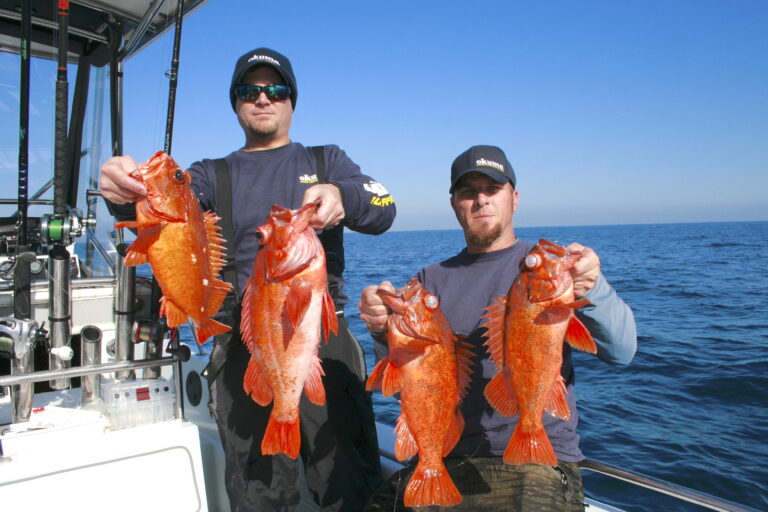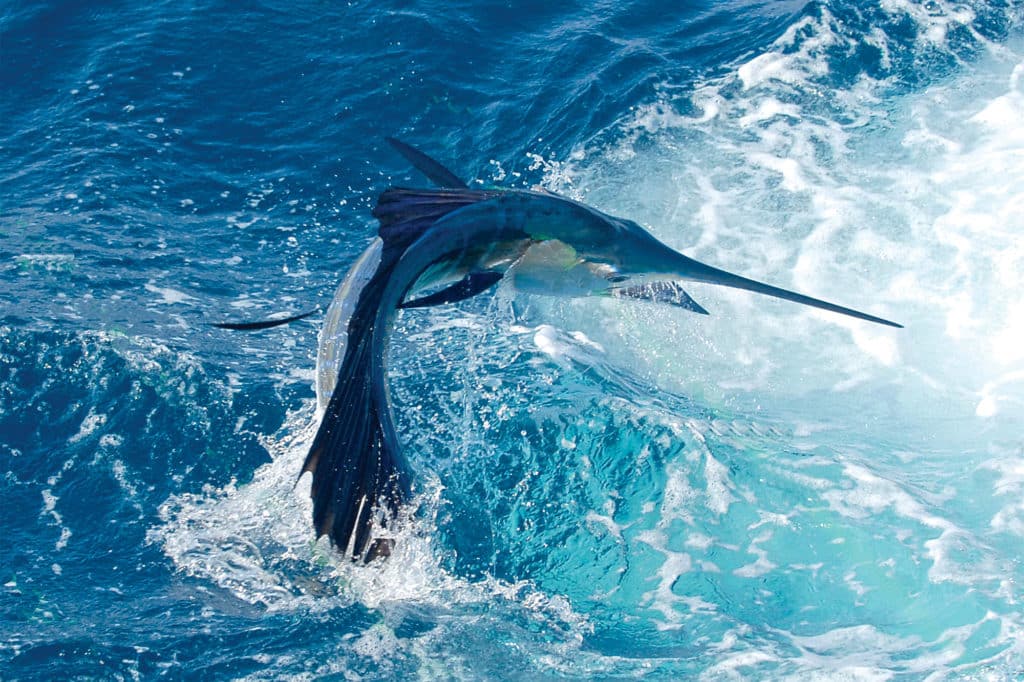
You rarely hear about anglers specifically targeting sailfish in the heat of summer. After all, the crux of Florida’s spindlebeak action takes place in winter and spring. But over the last eight to 10 years, reports of impressive sailfish catches have an increasing number of anglers leaving the docks with sailfish on their minds, long after blustery winds and chilly temperatures have given way to light breezes and sweltering weather.
Fast Facts for Success
Use the baitfish species most prevalent in the area. Once you’ve loaded the livewell, you can either slow-troll, drift and kite-fish or drift and live-chum.
Drift temperature breaks with several baits suspended on top from kites and others at staggered depths using twist-on rubber-core sinkers above the leader.
AdvertisementSummer sailfish regularly travel in small pods, so have a spinning outfit rigged with a pitch bait in case you see other sails trailing the hooked fish.
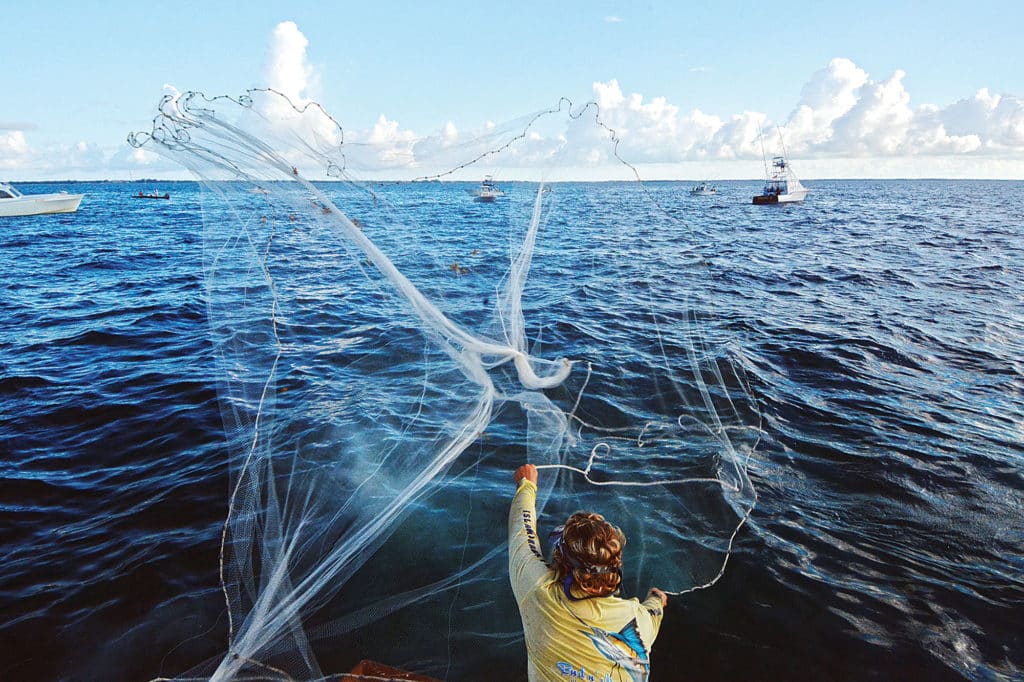
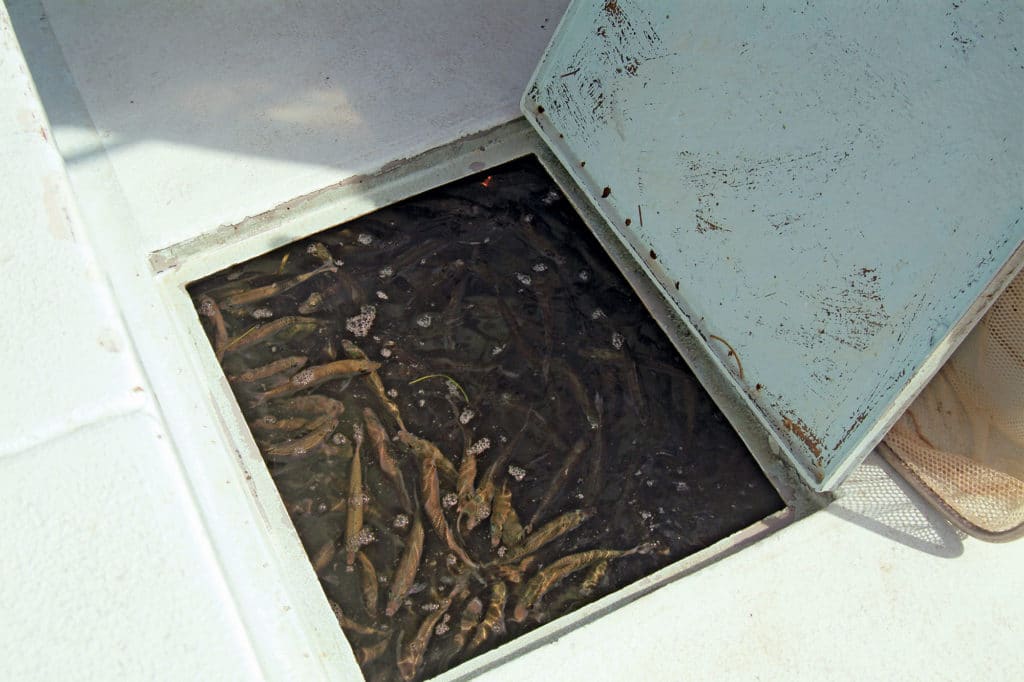
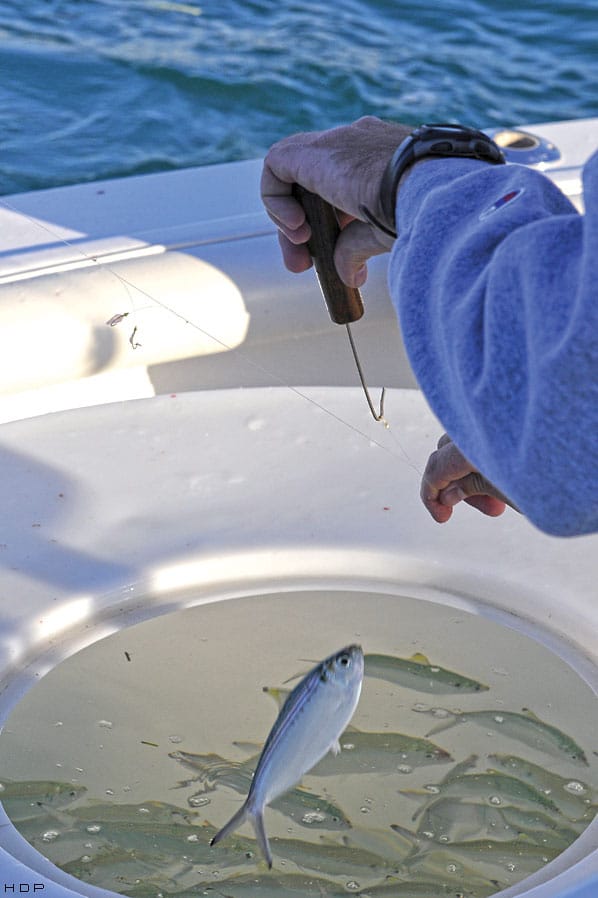
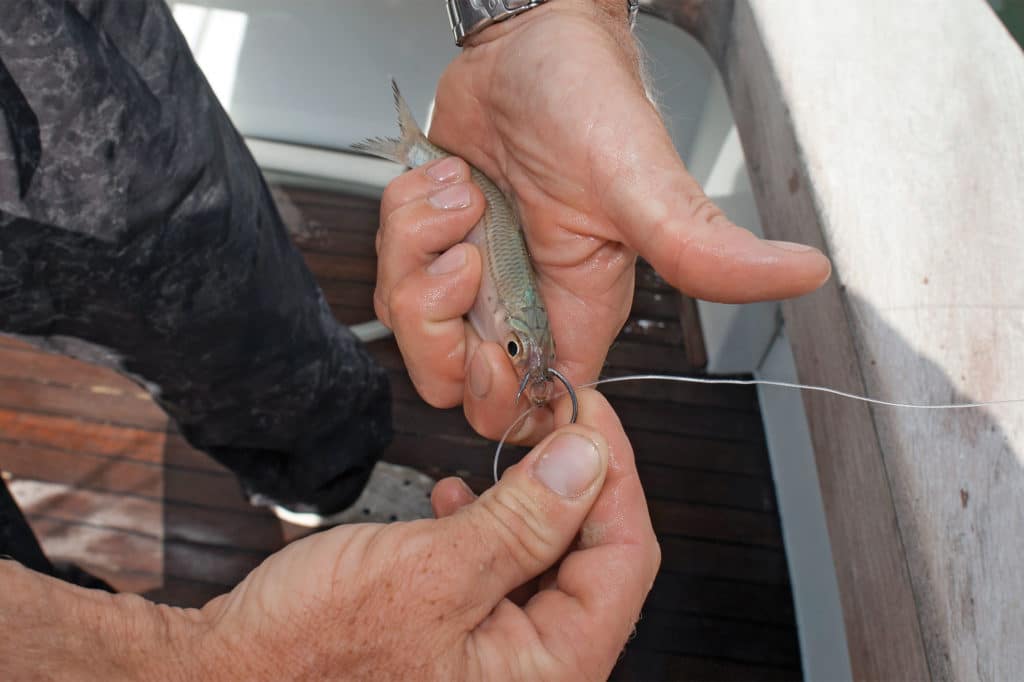
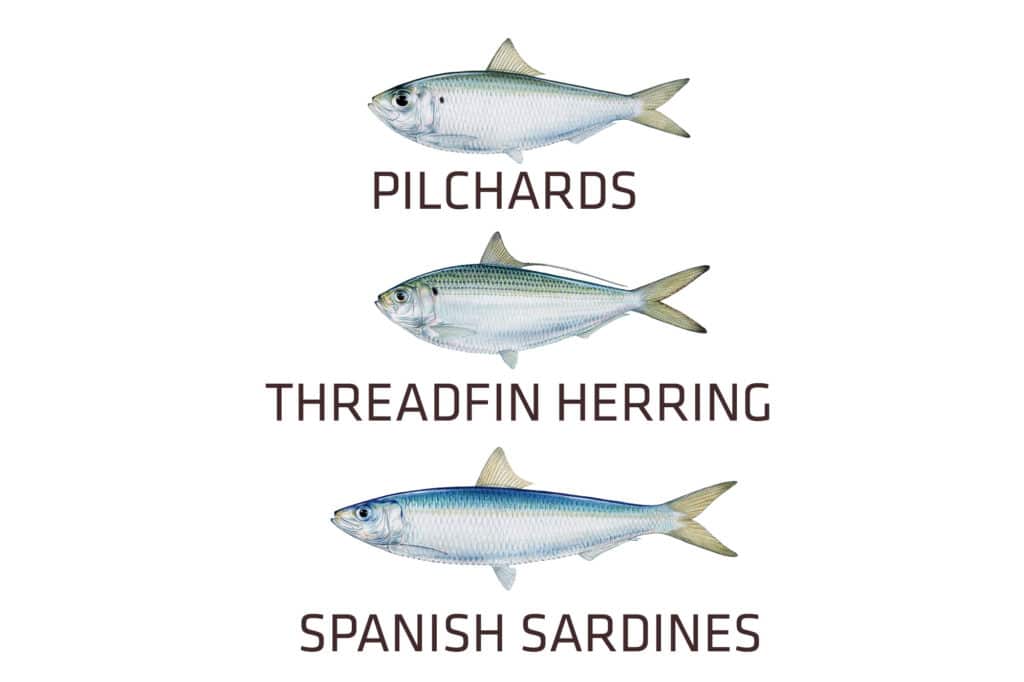
Look for 2- to 4-inch scaled sardines (aka pilchards), Spanish sardines and threadfin herring along beaches and inlets, over sandy or patchy bottom and around dock and bridge pilings. And use a 6- to 10-foot cast net with a 3⁄16-inch mesh — ¼-inch mesh in August, when baits are larger. For sailfish baits, catch larger versions of the same species with Sabiki rigs — gentler on the baits than cast nets — and use a dehooking tool to remove them from the sabiki hooks. The frisky ones get most attention from predators, so get rid of baits hooked in the gills, bleeding or swimming slowly in the livewell.
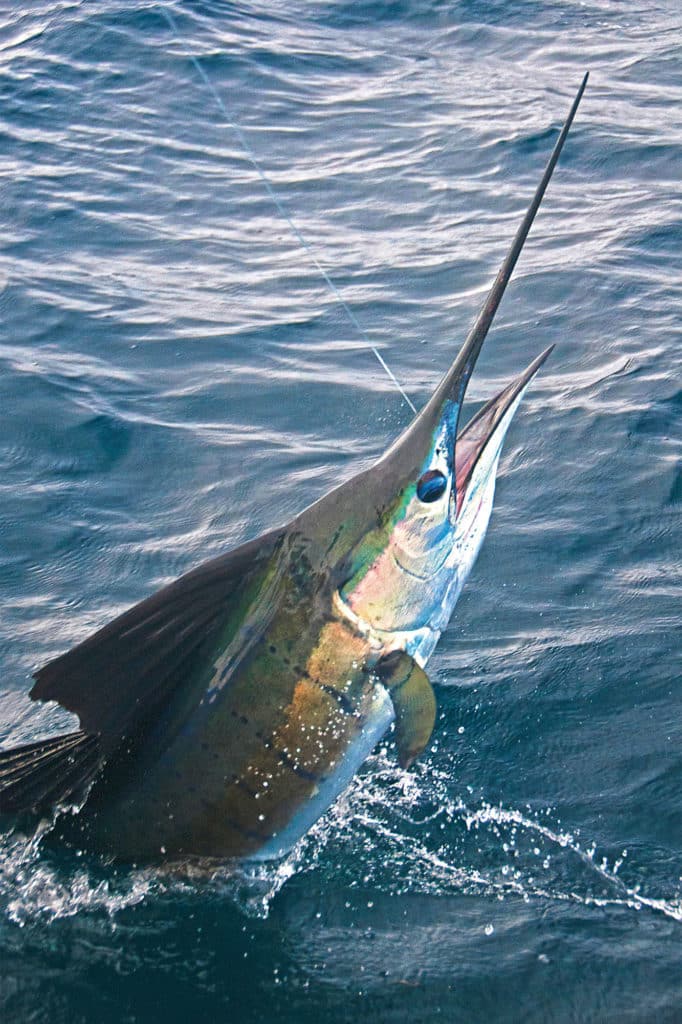
Slow-trolling pulls your baits through and around baitfish schools. As members of those schools change direction, your trolled baits are singled out as easy prey by sailfish balling bait — corralling them with their dorsal fin — and attacked.
An effective tactic for slow-trolling around bait schools is to add a 1- to 3-ounce barrel sinker just above the swivel; as the boat circles over a wreck, take it out of gear to allow the weighted baits to sink closer to the structure. After 30 seconds, put the motor back into gear. The baits are enticingly pulled away from the bait school, hopefully with a sail or two on their tails. This same tactic works when trolling rigged ballyhoo with teaser dredges, though not as effectively as with live bait.
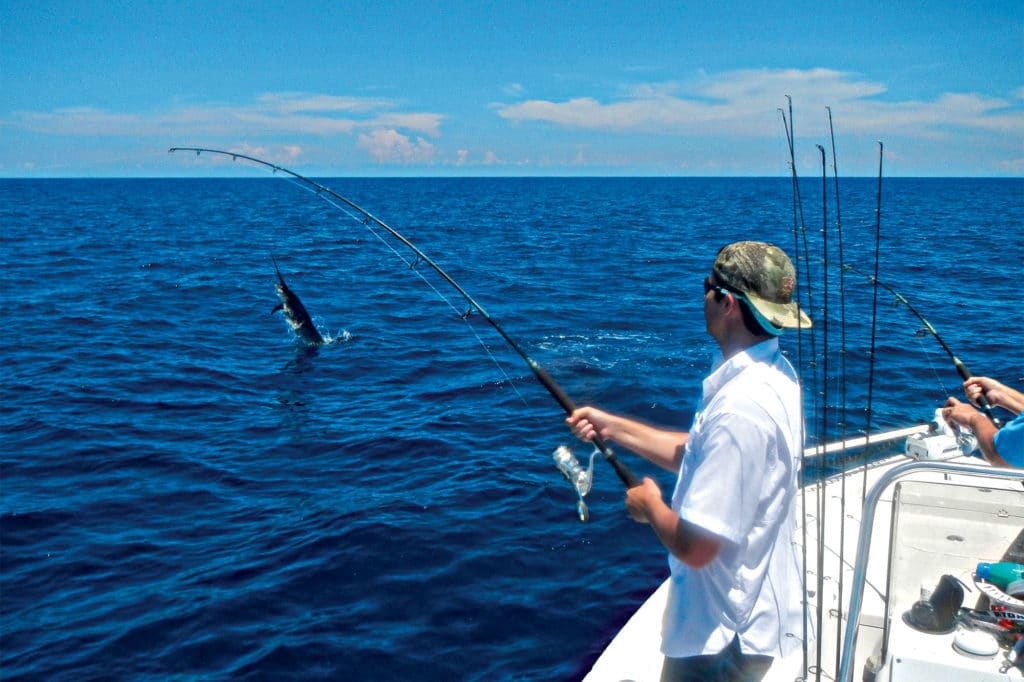
Drifting the bait schools is done with both surface and subsurface baits. For best results, position the boat up-current from a bait school and drift alongside or through the school. Once the boat drifts several hundred yards past the baitfish aggregation, slow-troll back into position for another drift.
Live-chumming from a drifting boat also works remarkably well on summer sailfish. Pilchards, threadfin herring or Spanish sardines, which can be cast-netted along the beaches, are used for chumming. The key is to stay on the outside edge of a bait school or the structure holding the bait so the livies you chum with don’t join the school and get lost among thousands of others.
Live-chumming is also ideal when you’re fishing temperature breaks because the boat scatters food along the entire temperature gradient while it drifts. The downside is that it draws a lot of little tunny, blue runners and remora. Mind you, while little tunny are often regarded as trash fish, the commotion they create when crashing chum baits will draw sailfish to the boat. And once the sails lock on the chum, they’ll literally swim right up to the transom and ball up the baits you toss over the side. Then, you simply pitch out a hooked bait, and it’s game on.
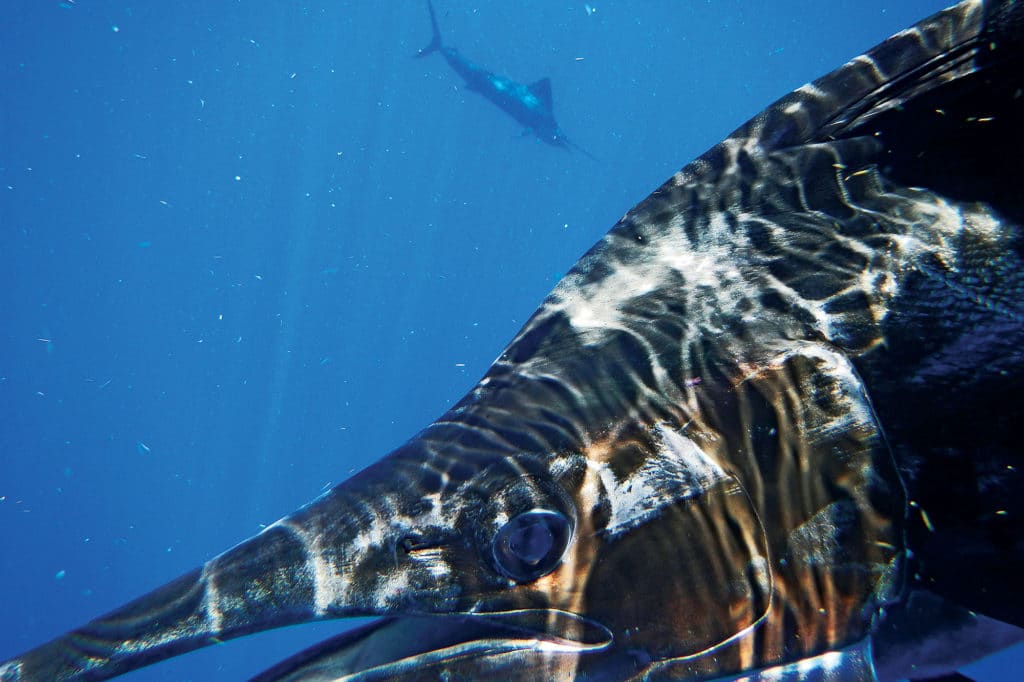
Summer sailfish regularly travel in small pods of two to six fish, but sometimes a large body of fish can be found in one area. It’s always good to keep at least one bait in the water at all times — even while fighting a hooked fish — and have a spinning outfit rigged with a pitch bait in case you see other sails trailing the hooked fish.
Last August, I scored big, live-chumming over structure in 250 feet of water. Each handful of chum brought at least one sail to the boat, and the two anglers on board went eight-for-nine in the span of only three hours. Every fish had followers, so as soon as they landed one sail, they hooked up and fought another one.
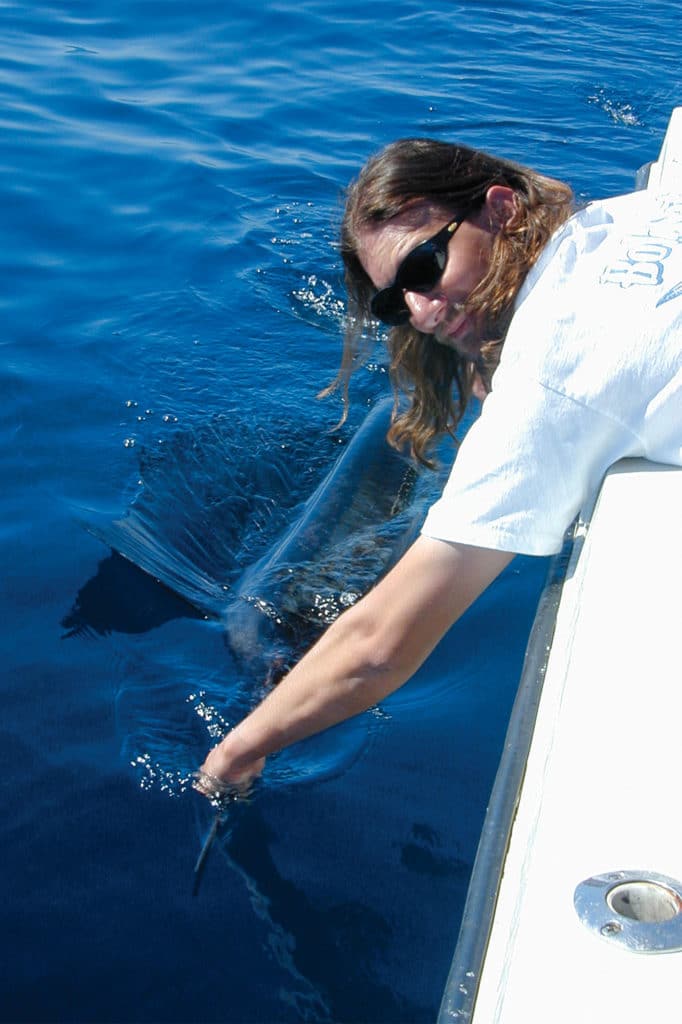
The deeper a fish dives, the colder the water, and since sailfish tolerate only 4- to 6-degree temperature swings, the majority stay in the top 30 feet of the water column. Palm Beach sailfish guru Nick Smith believes temperature breaks of as little as 1 or 2 degrees are big when trying to locate sails. Such breaks are fairly easy to find with the built-in temperature gauge on most fish finders as you look for visible rips, edges and well-defined current breaks. Anytime you have current pushing toward the surface hard enough to make an edge, one side of the edge will be warmer than the other. Pinpointing the side on which the sails are holding then becomes a matter of trial and error.








